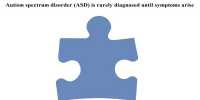Researchers have developed a new, open-access tool that allows doctors and scientists to assess infant brain health by measuring the concentration of various chemical markers in the brain known as metabolites. To determine normal ranges for these metabolites, the tool compiled data from 140 infants.
The study, published in the journal NMR in Biomedicine, describes an easier and more reliable way to evaluate metabolite concentrations in the infant brain than was previously available, according to study lead Ryan Larsen, a researcher at the University of Illinois Urbana-Beckman Champaign’s Institute for Advanced Science and Technology.
Dr. Ellen Grant, the director of the Fetal Neo-Natal Neuroimaging and Developmental Science Center at Boston Children’s Hospital and a professor of radiology and pediatrics at Harvard Medical School, said that metabolites play an important role in normal brain growth, development, and function. Brain metabolite levels that are too high or too low may be the first sign of a problem with brain function or development.
Researchers have created a new, open-access tool that allows doctors and scientists to evaluate infant brain health by assessing the concentration of various chemical markers, called metabolites, in the brain. The tool compiled data from 140 infants to determine normal ranges for these metabolites.
“For example, we look at choline, which is involved in the formation of myelin, the sheath that allows electrical impulses to travel along neurons,” Grant explained. “Another metabolite known as NAA is essential for the healthy growth and proliferation of dendrites, which are the branches on neurons that receive signals from other neurons.”
Researchers can spot some problems early by measuring the concentration of key metabolites like these, she said, allowing interventions in time to prevent damage to the developing brain.
Proton magnetic resonance spectroscopy, a technology that uses an MRI, not for visual imaging but to detect and identify specific molecules in the tissues of interest, is typically used to assess metabolites in the brain. To standardize these measures, the most common approach requires extensive imaging and detailed calculations of the amount of water inside and outside brain tissues, which is a costly and time-consuming approach.

To address this issue, Grant and study co-author Borjan Gagoski, a radiology instructor at Boston Children’s Hospital, used proton MRS to scan the brains of 140 infants between the ages of one and three months. In addition to using water as a reference, the researchers compiled data from a number of key metabolites in their calculations. This enabled them to develop a tool that assesses the concentration of anyone metabolite in an infant’s brain using standard values for several metabolites.
“What most everybody does is they look at a simple ratio between metabolite 1 and metabolite 2,” Larsen said. “But if that ratio is low, does that mean that metabolite 1 is low or that metabolite 2 is high? It becomes a problem of interpretation.”
Instead, the team painstakingly assessed relationships between seven key metabolites in order to create a database of normal values for each one at various time points, as well as to demonstrate how metabolite concentrations change in relation to one another as the infant’s brain develops. The tool developed by the team provides a checklist of reference brain metabolites that users can select in various combinations to better understand an individual infant’s profile.
“Spectroscopy is extremely difficult to perform, but when done correctly, it can help us learn more about the brain,” Gagoski said. “This method has a lot of promise because we can detect abnormalities and diseases before we see anything on the structural scans. And it is critical to monitor brain health at this stage of life.”
Abbott is funding this research through the University of Illinois Urbana-Center Champaign’s for Nutrition, Learning, and Memory. The University of Illinois News Bureau has a copy of the paper “Quantification of magnetic resonance spectroscopy data using a combined reference: Application in typically developing infants.”















